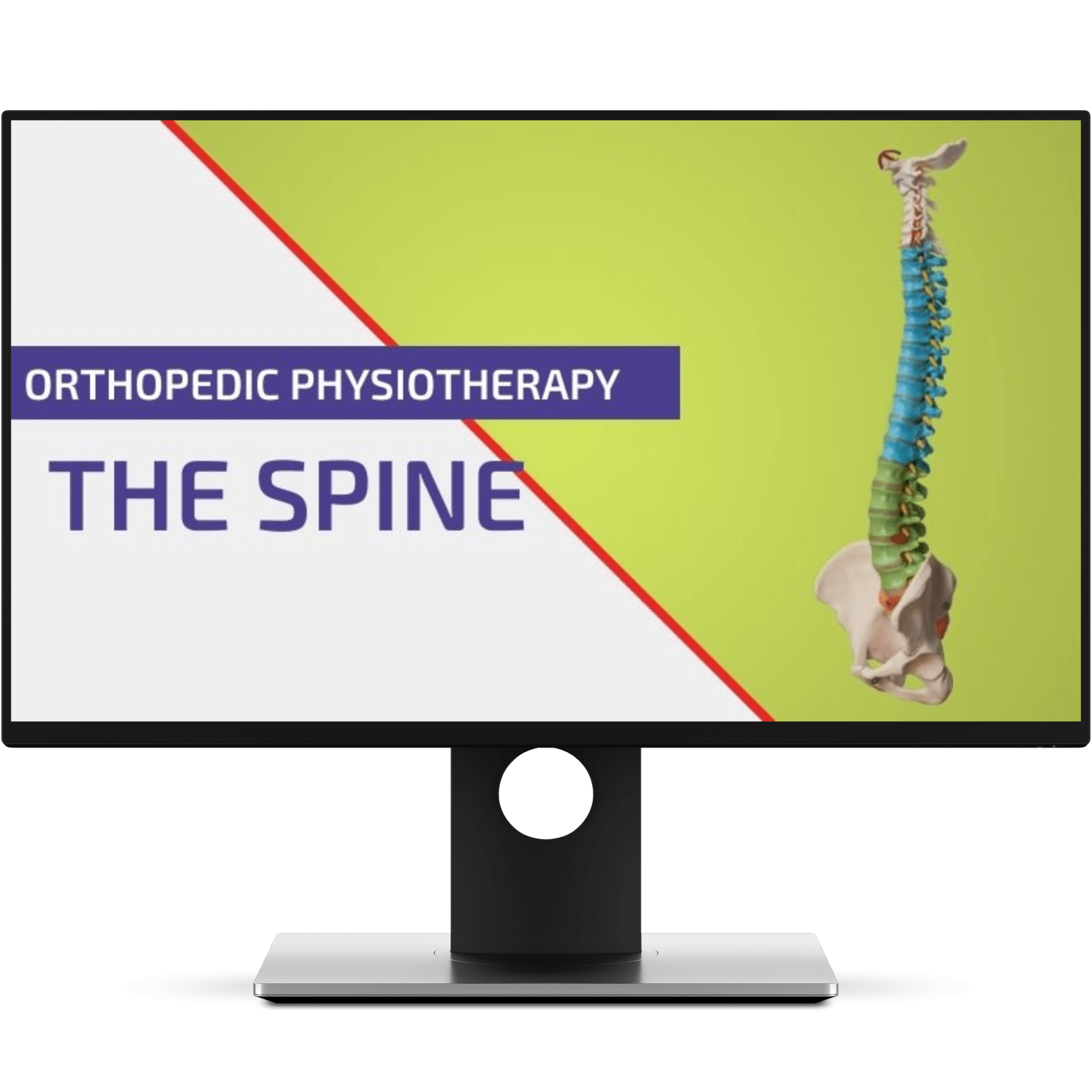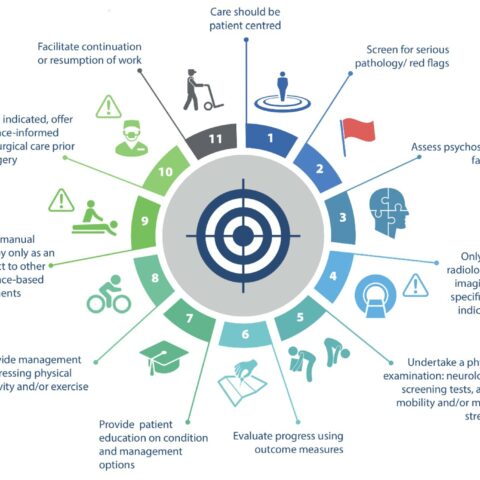Best practice recommendations in physiotherapy
If you present a case of a patient with a musculoskeletal complaint to 10 different physiotherapists, you’ll likely get several different approaches not always in line with recommended best practice care. That’s why here at Physiotutors we strive to provide you with evidence-based recommendations on diagnosis and treatment of the several conditions we discuss.
If you look closely at those recommendations, you should be able to see an overarching theme that we will discuss in this blog. Should you prefer watching/listening then click on the video below:
Musculoskeletal conditions of the neck, back, shoulders, hips and knees account for the biggest burden on healthcare systems worldwide. Sadly, many common pathologies of the musculoskeletal system are mismanaged and face four common problems: First of all, the overuse of imaging such as MRIs and XRAYs despite practice guidelines advocating against their routine use. Kai did a deep dive on when imaging is appropriate in another video. Second of all, surgery is chosen as first line treatment way too often despite robust evidence showing it’s quite frankly useless for many musculoskeletal conditions. Then we have the opioid epidemic as potent analgesics are often prescribed too early or inappropriately and at last, many patients receive insufficient education and advice on their health complaint hampering their recovery process.
1. Patient-centered care
Above all else, the cornerstone of healthcare should be its unwavering commitment to patient-centered care. This fundamental principle dictates that the entire care delivery process must revolve around the unique context and needs of each individual patient. Central to this approach is the promotion of effective and empathetic communication, fostering a profound understanding of the patient’s specific circumstances, concerns, and preferences. In tandem with this, shared decision-making becomes an essential element of patient-centered care, ensuring that medical decisions are collaborative endeavors involving both healthcare providers and patients. This cooperative approach not only respects the patient’s autonomy but also capitalizes on their valuable insights and preferences. Ultimately, this patient-centered philosophy strives to empower individuals by tailoring their care to their distinct requirements, thereby promoting more effective, personalized, and satisfactory healthcare experiences.
2. Screening for serious pathology
As direct-access to physiotherapy is increasing worldwide, screening for red-flags should be the first step in the care for musculoskeletal pain. That’s why you will find several videos on our channel on screening for serious pathology.
3. Assess psychosocial factors
Furthermore, any health complaint should be looked at in a bio-psycho-social framework and thus assessing psychosocial factors is recommended. These include yellow-flags, mood and emotions (such as depression and anxiety), fear of movement and the patient’s expectations pattern. There are several questionnaires that can help and the most commonly recommended ones are the StartBack tool and Örebro.
ONLINE COURSE
ORTHOPEDIC PHYSIOTHERAPY OF THE SPINE
Master treating conditions of the spine in our comprehensive online course.

4. Discourage radiological imaging
While most of the recommendations are “do’s”, Lin and colleagues also list a couple of “don’ts”. The first being to discourage routine radiographic imaging unless 1, you suspect serious pathology after your screening, 2 there has been unsatisfactory response to conservative care or unexplained progression of signs and symptoms or 3, if imaging is likely to change management. The inappropriate use of imaging can do harm in 3 ways: First, when clinicians misinterpret the imaging findings, second, when the findings are misinterpreted by the patient and third by exposure to radiation. At this point I encourage you to watch our video on the usefulness of imaging in low back pain.

5. Perform a physical examination
The next recommendation is to perform a physical assessment, which could include neurological screening tests, mobility assessment and muscle strength testing. Special testing however has been shown several times to be of limited value in the diagnostic process. Nonetheless there are some special tests that have high clinical value, which we have compiled in a playlist you can watch. Apart from judging physical examination purely based on a lack of empirical support, we shouldn’t disregard possible dissatisfaction from the patient and unwarranted demand for tests or further referrals.
6. Assess progress with validated outcome measures
During the rehab process, the patient’s progress should be evaluated using validated outcome measures. A good starting point is tracking progress using a Numeric pain rating scale, assessing the patient specific complaints in daily living, a self-rated recovery questionnaire, and quality of life assessments. Our library of clinical questionnaires is growing on physiotutors.com, make sure to check them out.
AS A THERAPIST YOU SHOULD BE ABLE TO ANSWER FOUR SIMPLE QUESTIONS YOUR PATIENT LIKELY HAS: 1. WHAT IS WRONG WITH ME? 2. HOW LONG WILL IT TAKE? 3. WHAT CAN I DO FOR IT? AND 4. WHAT CAN YOU DO FOR IT?
Louis Gifford
7. Provide patients with education/information
When seeing a patient with a health complaint, not only of musculoskeletal nature, it’s important to provide the patient with education or information about their condition and the available management options. So before you go ahead with any treatment, encourage self-management and inform and reassure the patient about the condition and try to lay their prognosis out for them. As Louis Gifford put it: As a therapist you should be able to answer four simple questions your patient likely has: 1. What is wrong with me? 2. How long will it take? 3. What can I do for it? And 4. What can you do for it?
8. Provide management focussing on physical activity
Across the various high-quality CPGs on musculoskeletal pain, consensus was found in management that addresses physical activity and/or exercise. So conditions such as OA, low back pain, neck pain or rotator cuff disorders can effectively be treated with maintenance of normal physical activity, aerobic exercises, and a general exercise program, including strength, mobility, stretching and neuromuscular education.
9. Provide manual therapy only as adjunct
In the context of manual therapy, it is imperative to underscore that its application is most beneficial when it is integrated as a complementary component within the framework of the treatments mentioned earlier. Lin et al, in their comprehensive evaluation, characterizes manual therapy as a “could do” proposition rather than a definitive “should do” mandate. This distinction underscores the nuanced and selective nature of manual therapy in the management of musculoskeletal conditions. The use of manual therapy should be considered judiciously, taking into account the specific needs and responses of each patient. When integrated strategically alongside the aforementioned treatment modalities, it can be a valuable adjunct in the pursuit of enhanced patient outcomes. This “could do” perspective encourages a more tailored and patient-centric approach, recognizing that manual therapy may be an option in certain cases but is by no means a universal necessity. Thus, the holistic treatment approach for musculoskeletal pain should be characterized by flexibility, adaptability, and a case-by-case assessment to determine the most appropriate course of action for individual patients.

10. Offer evidence-based non-surgical care first
In the introduction, as previously highlighted, there is a growing concern regarding the increasing prevalence of surgical interventions as a primary approach for addressing musculoskeletal pain. This trend persists despite a substantial body of empirical evidence which unequivocally argues against surgery as the initial course of action in treating such conditions. It is imperative that a paradigm shift occurs in the management of musculoskeletal pain, emphasizing non-surgical therapies as the first line of defense. Consequently, it is strongly advised that healthcare professionals prioritize offering patients a comprehensive array of conservative, non-invasive treatments as their initial step in addressing their musculoskeletal issues. This proactive approach is crucial in order to allow patients to experience the benefits of non-surgical care and exhaust all appropriate conservative treatment options before even contemplating the consideration of surgical procedures. By embracing this strategy, we can not only improve patient outcomes but also reduce the burden on healthcare systems and minimize the potential risks associated with unnecessary surgeries.
11. Facilitate continuation or resumption of work
At last, one “should do” recommendation is to facilitate continuation or resumption of work as prolonged absence from work is a negative prognostic factor for recovery of several musculoskeletal conditions. Therefore, your treatment should include ways to facilitate return to work and to make adaptations so that can be achieved. This is ideally done in a multi-disciplinary framework involving not only you and your patient but also the employer, company doctor or vocational rehabilitations services.



NICE